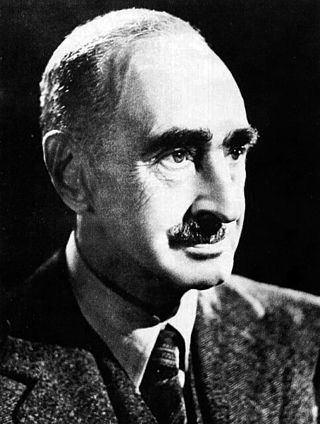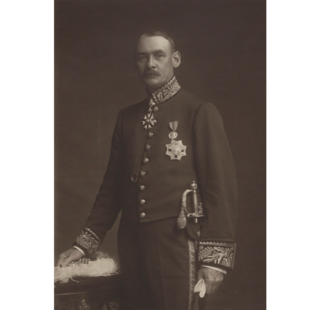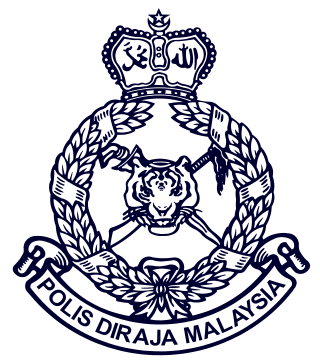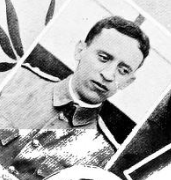Related Research Articles

The Federated Malay States was a federation of four protected states in the Malay Peninsula — Selangor, Perak, Negeri Sembilan and Pahang — established by the British government in 1895, which lasted until 1946, when they, together with two of the former Straits Settlements and the Unfederated Malay States, formed the Malayan Union. Two years later, the Union became the Federation of Malaya, which achieved independence in 1957, and finally Malaysia in 1963 with the inclusion of North Borneo, Sarawak and Singapore.

Sir Andrew Caldecott was a British colonial administrator.

The Government Buildings in Suva are the offices of the executive wing of Government of Fiji. Built in the late 1930s as the seat of the colonial administration, the Art Deco buildings today house the Prime Minister of Fiji's offices, the High Court, and several government ministries. It is also the seat of the Parliament of Fiji since 2014, having previously been the seat of Fiji's parliament from independence in 1970 until the 1987 coups.

Sir Edward Lewis Brockman was a colonial administrator who served briefly as the Colonial Secretary to the Straits Settlements in 1911 and was the chief secretary to the Federated Malay States (FMS) from 1911 to 1920. He announced the establishment of the Town Planning Committee to oversee Kuala Lumpur town planning service. He was descendant of the English Brockman family. Brockman Road in Kuala Lumpur was named after him, where the former Prime Minister office was located.
Sir Richard Olaf Winstedt, or more commonly R. O. Winstedt, was an English Orientalist and colonial administrator with expertise in British Malaya.

The Royal Malaysia Police trace their existence to the Malacca Sultanate in the 1400s and developed through administration by the Portuguese, the Dutch, modernization by the British beginning in the early 1800s, and the era of Malaysian independence.
Richard James Wilkinson was a British colonial administrator, scholar of Malay, and historian. The son of a British consul, Richard James Wilkinson was born in 1867 in Salonika (Thessaloniki) in the Ottoman Empire. He studied at Felsted School and was an undergraduate of Trinity College, Cambridge. He was multilingual and had a command of French, German, Greek, Italian and Spanish, and later, Malay and Hokkien which he qualified in, in 1889, while a cadet after joining the Straits Settlements Civil Service. He was an important contributor to the Journal of the Malayan Branch of the Royal Asiatic Society (JMBRAS). On 7 November 1900 Wilkinson presented a collection of Malay manuscripts and printed books to the University of Cambridge Library. He was appointed CMG in 1912.

Arthur Benison Hubback was an English architect and soldier who designed several important buildings in British Malaya, in both Indo-Saracenic architecture and European "Wrenaissance" styles. Major works credited to him include Kuala Lumpur railway station, Ubudiah Mosque, Jamek Mosque, National Textile Museum, Panggung Bandaraya DBKL, Ipoh railway station, and Kowloon railway station.

The Inspector-General of Police, also known as the Chief of Police, is the highest-ranking police officer of the Royal Malaysia Police. He was assisted by the Deputy Inspector-General of Police or Deputy Police Inspector-General (DPIG), he reports to the Minister of Home Affairs. The IGP is based at Bukit Aman, Kuala Lumpur which is the Headquarters of the RMP.
Wilfred Lawson Blythe was a British colonial administrator who served as the second Colonial Secretary of Singapore from 30 June 1950 to 30 July 1953.
Hugh Fraser (1891–1944), was a British colonial administrator. He was the last acting Colonial Secretary of Straits Settlements before the fall of Singapore on 15 February 1942 to the Japanese Occupation and was interned in Changi Prison. He subsequently died in Outram Road Prison in 1944.
George Hemmant was a colonial administrator. He joined the Malayan Civil Service and was a cadet on 27 November 1903. He served most of his civil service career in Federated Malay States and Straits Settlements.
Sir Alexander Sym Small was a colonial administrator. He joined the Malayan Civil Service and was a cadet in January 1911 and served most of his Civil Service career in Federated Malay States (FMS) and Straits Settlements (SS). He retired as the Colonial Secretary of Straits Settlements in 1940.
Stanley Wilson Jones was a colonial administrator. He was a cadet of Malayan Civil Service in 1911 and spent his civil service career in Federated Malay States and Straits Settlements. He was the British Resident of Selangor and Colonial Secretary of Straits Settlements.
Christopher Dominic Ahearne or C D Ahearne was a colonial administrator. He entered Straits Settlement Government service in 1910 as a cadet and was later the Federal Secretary of the Federated Malay States (FMS) in 1936.

Christopher Noble was an English surveyor who served as the ninth Surveyor-General of the Federated Malay States, from 1953 to 1956.
William Lance Conlay CBE was a British colonial administrator and Commissioner of Police of the Federated Malay States from 1916 to 1925.

George Percy Cuscaden ISO was the Chief Police Officer of Selangor, Federated Malay States, from 1919 to 1932.
Norman Rowlstone Jarrett CMG was a British colonial administrator in Malaya.
References
- 1 2 3 4 5 6 7 8 "F.M.S. Police Chief". Malaya Tribune. 28 May 1931. p. 10.
- 1 2 3 4 5 "29 Years in the Police Force". The Straits Times. 8 July 1931. p. 11.
- ↑ "Government Appointments". The Straits Times. 1 May 1920. p. 8.
- ↑ "Singapore Riots". The Straits Echo. 25 June 1919. p. 932.
- ↑ "Mr. Hannigan's New Appointment". The Straits Times. 29 January 1925. p. 8.
- ↑ "The Slump and Crime". The Singapore Free Press and Mercantile Advertiser. 12 June 1931. p. 12.
- ↑ "Former F.M.S. Police Chief". he Singapore Free Press and Mercantile Advertiser. 28 February 1933. p. 7.
- ↑ "News Of Malayans In Britain". The Straits Times. 22 January 1946. p. 2.
- ↑ "Untitled". The Straits Times. 10 May 1927. p. 8.
- ↑ "Page 3815 | Supplement 33946, 2 June 1933 | London Gazette | The Gazette". www.thegazette.co.uk. Retrieved 2024-03-21.
- ↑ Isa, Mariana; Kaur, Maganjeet (2015-09-15). Kuala Lumpur Street Names: A Guide to Their Meanings and Histories. Marshall Cavendish International Asia Pte Ltd. ISBN 978-981-4721-44-8.